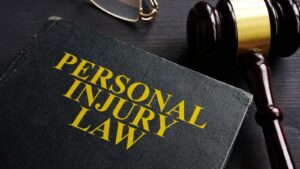
You may have heard of the term ‘pain and suffering’, but what does it actually mean in Washington?
If you have been a casualty of a personal injury accident, including a car accident, and the accident was the fault of someone else, you may be due compensation for any injuries you received. Besides compensation for your physical injuries, you may also be entitled to compensation for non-economic injuries, otherwise known as “pain and suffering,” caused by the accident.
Although we have all heard the term “pain and suffering,” many people may not actually understand what injuries the pain and suffering calculation includes or even how they are calculated.
Washington State’s Legal Definition of Pain and Suffering
The State of Washington defines non-economic injuries as “subjective, non-monetary losses, including, but not limited to pain, suffering, inconvenience, mental anguish, disability or disfigurement incurred by the injured party, emotional distress, loss of society and companionship, loss of consortium, injury to reputation and humiliation, and destruction of the parent-child relationship.” (RCW 4.56.250)
So, what they’re saying is that a wide variety of subjective injuries suffered in an accident can be included in pain and suffering. The pain and suffering portion of your settlement represents things that are not easy to quantify. As an example: Unlike an injury for which you incur a medical bill, you do not receive a bill for the pain suffered as a result of that injury which makes it more difficult to quantify. Other things that are more difficult to quantify include, emotional distress, permanent disfigurement and scars.
Everyone’s Pain and Suffering is Unique
Each victim is affected in their own unique way by emotional distress, pain and anguish caused by an accident. One victim may experience the trauma of an accident more severely than another. In the same way, one victim may suffer anguish as a result of disfigurement, or physical scarring, more severely than another victim. Our emotional reaction as the victim of an accident is as unique as our individuality.
If you have been injured in a personal injury or car accident in the Edmonds WA area you need a personal injury lawyer who can sit down with you and give you an accurate idea of what your case is worth, pain and suffering included. The factors considered when calculating your pain and suffering award include, your age, occupation and general state of health prior to the accident, and the actual physical injuries you received. An insurance adjuster may try to convince you that your pain and suffering award is a fixed amount but don’t settle for less than what your case is worth. The personal injury attorneys at Cunnane Law can help. Contact us today!
Note: This information was provided not for any specific claim and is written in broad and general terms and may not be the right path to follow for a particular claim or case. This information is not intended to create an attorney client relationship. It is always best to receive direct legal counsel for your legal issues. It is never too early to call the attorney, but it can be too late.


 You Deserve an Advocate
You Deserve an Advocate